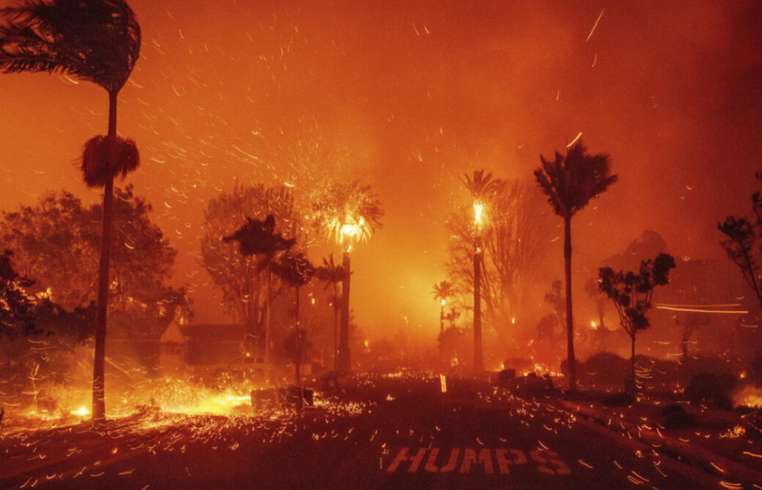
Latest on the Los Angeles Wildfires and Their Causes

Latest on the Los Angeles Wildfires and Their Causes
**Los Angeles Wildfires: What We Know So Far and the Causes Behind the Blaze**
As of January 2025, Los Angeles is once again battling the devastating impacts of wildfires. This year’s fires, fueled by a mix of intense heat, drought, and erratic winds, have ravaged thousands of acres of land in and around the city. These wildfires come as a stark reminder of the region’s ongoing vulnerability to climate change, urban expansion, and environmental mismanagement.
#### The Blaze in 2025: A Summary
The latest wildfire, which began in the hills of the San Fernando Valley and quickly spread to Malibu, has consumed over 50,000 acres of land. Firefighters have been battling the blaze for over a week, with thousands of residents evacuated, and many structures damaged or destroyed. As of the latest reports, the fire is 60% contained, but several dangerous hot spots remain.
Air quality in surrounding areas has plummeted due to the smoke, leading to widespread health concerns. Schools and businesses are temporarily shut down, and the local government has advised residents to stay indoors or wear masks outdoors to avoid the hazardous air.
#### The Causes Behind the Wildfires
The primary reasons for these recurrent wildfires in Los Angeles are rooted in a combination of natural and human-made factors:
1. **Climate Change**: One of the driving forces behind the increasing frequency and intensity of wildfires in California is climate change. Rising temperatures and prolonged droughts have created the perfect storm for fires to spread. Scientists have warned that hotter, drier conditions are likely to continue, exacerbating the threat of wildfires.
2. **High Winds**: The strong Santa Ana winds that frequently sweep across Southern California have contributed to the rapid spread of the fires. These winds can gust up to 60 mph and carry embers for miles, making it almost impossible to contain the flames once they start.
3. **Human Activity**: While wildfires can start naturally from lightning strikes, the majority of wildfires in California are caused by human activities. Whether through negligence, discarded cigarettes, or deliberate arson, human intervention remains a significant risk factor. In this case, local authorities are investigating reports of possible arson in the early stages of the fire.
4. **Vegetation and Land Management**: The abundance of dry brush and undergrowth in California's forests, much of it left unchecked due to insufficient land management practices, serves as fuel for these blazes. Fires in forested and grassland areas spread quickly, especially when exacerbated by the aforementioned climate conditions.
#### The Impact on Los Angeles
The city of Los Angeles itself has not been directly hit by the flames, but smoke and ash have created an unhealthy atmosphere for residents. Emergency services and the National Guard have been deployed to help with evacuation efforts, while local hospitals and shelters are prepared for a surge in health issues related to smoke inhalation and stress.
Economically, the damage is already significant, with many residents displaced and homes destroyed. The tourism and entertainment industries have also felt the strain, as popular destinations like the Getty Center, Griffith Park, and Malibu’s beaches have been closed to the public.
#### What’s Being Done?
In response to the growing wildfire risk, local and state authorities have taken several steps to curb future wildfires. These include increasing firebreaks, improving early detection systems, and pushing for more aggressive vegetation management programs. Climate experts are also calling for more aggressive action to combat global warming, including pushing for stricter regulations on emissions, expanded green spaces, and increased funding for firefighting resources.
While the current wildfire is not fully under control, the combined efforts of local and state agencies, along with volunteers, are bringing some hope to residents facing an uncertain future.
